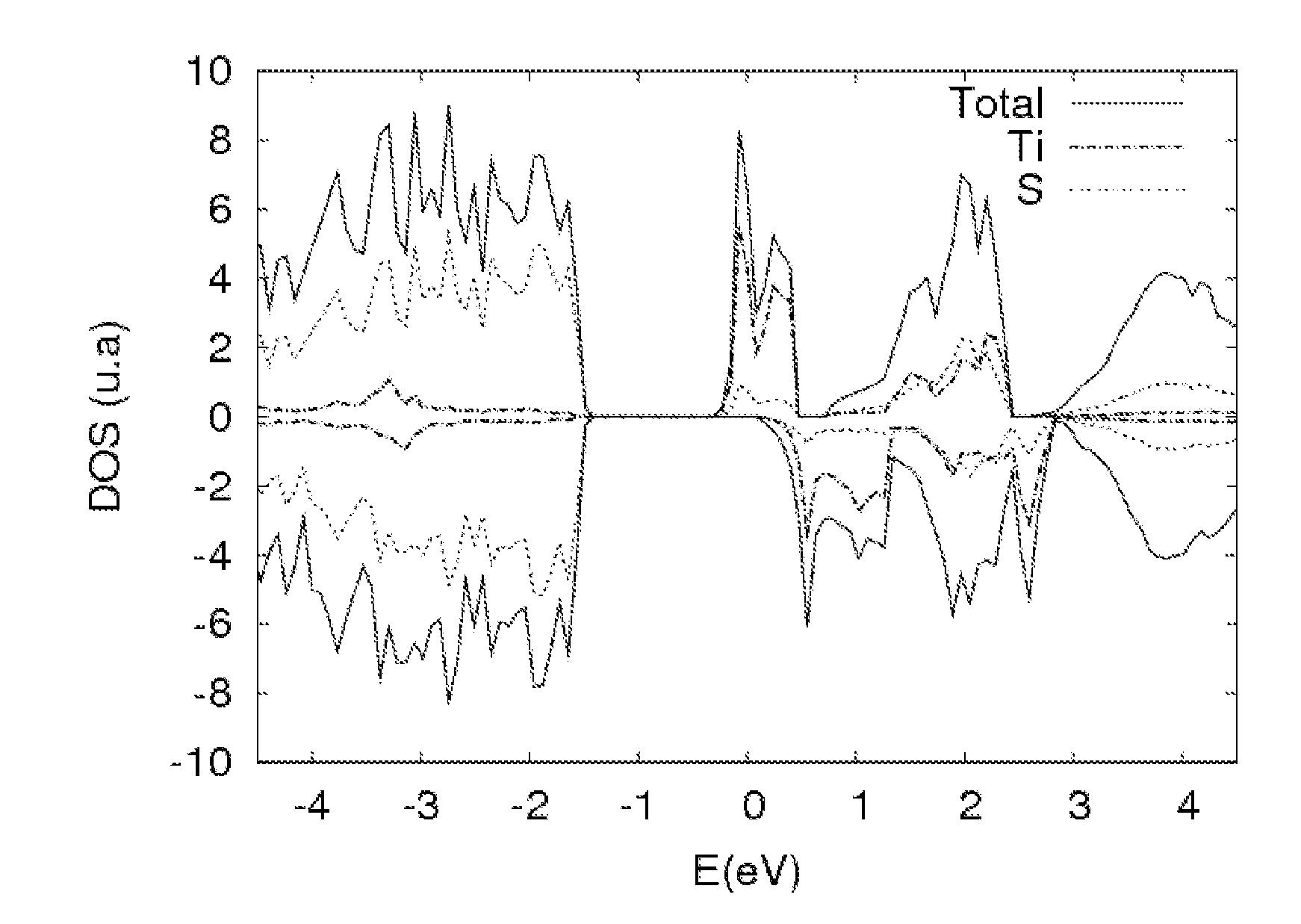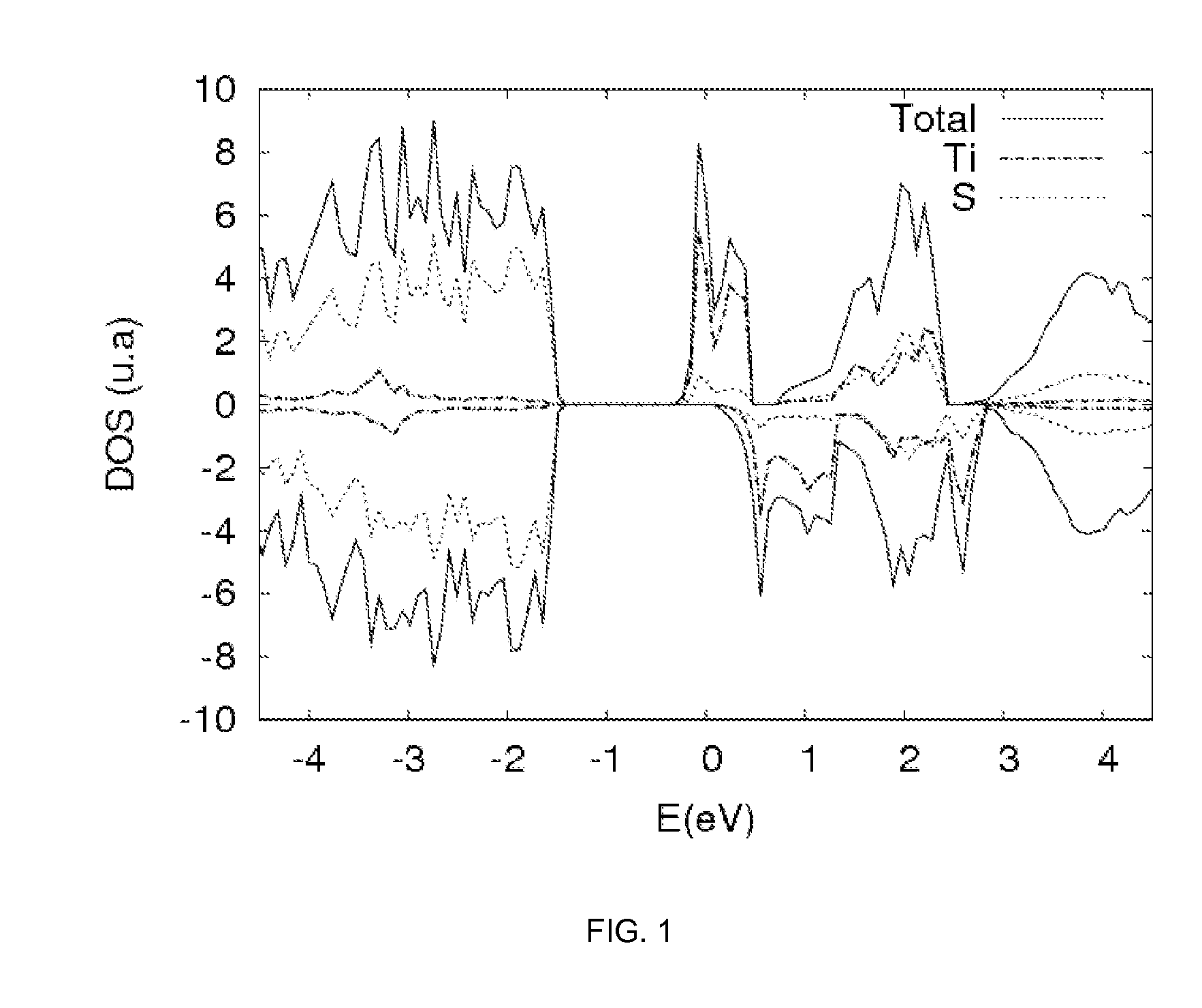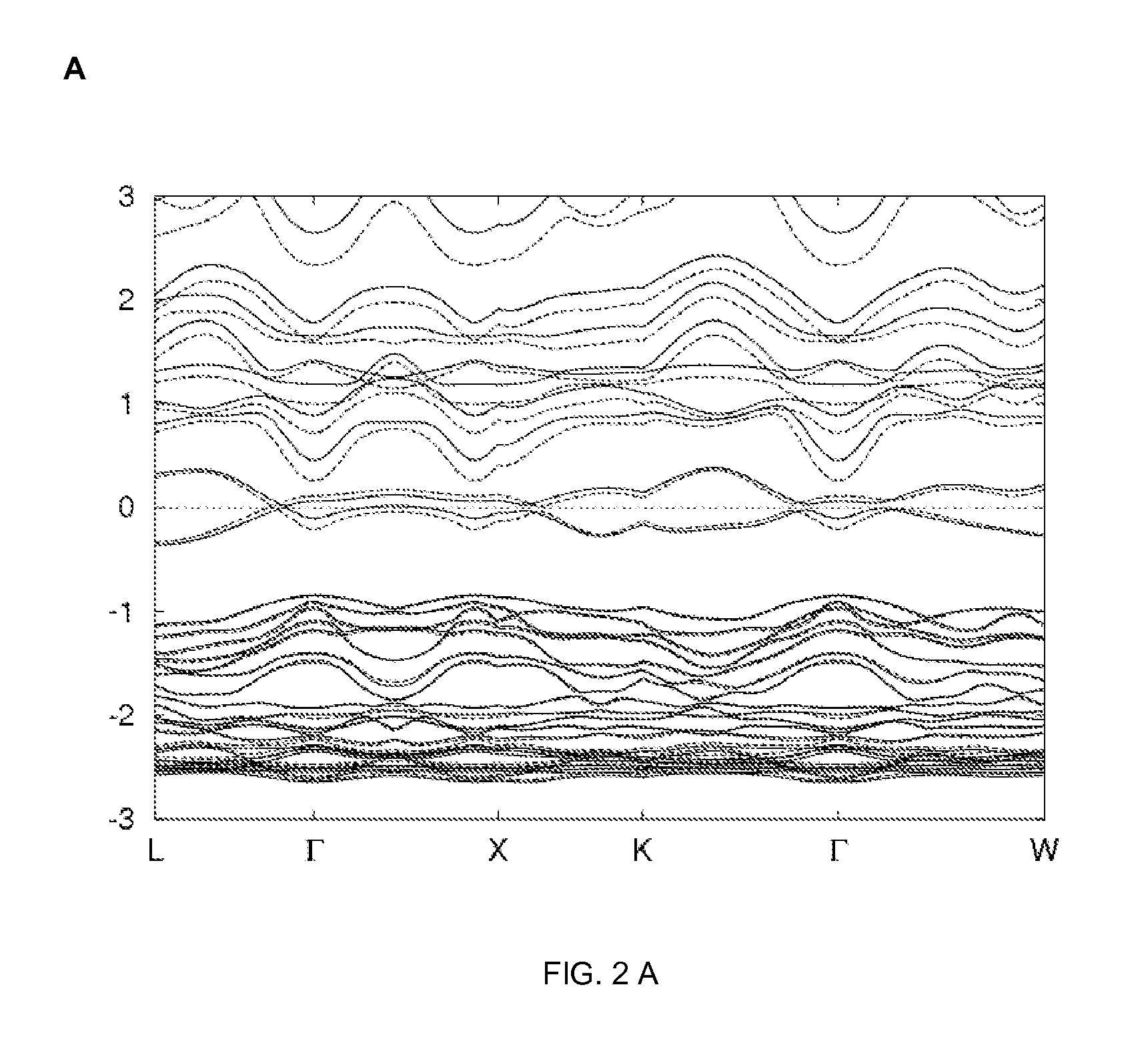Photonic use of intermediate band materials on a chalcogenide-type semiconductor
- Summary
- Abstract
- Description
- Claims
- Application Information
AI Technical Summary
Benefits of technology
Problems solved by technology
Method used
Image
Examples
example 1
[0041]Determination of the intermediate band electronic structure in sulfides with spinel-type structure which comprise indium in octahedral position and wherein part thereof has been substituted by titanium or vanadium.
[0042]The authors of this invention performed quantum mechanics calculations using the standard methodology of the density functional theory (DFT), in its generalized gradient approximation (GGA). For this, the VASP program was used [G. Kresse and J. Hafner, Phys. Rev. B 47 (1993) RC558; G. Kresse and J. Furthmüller, Phys. Rev. B 54 (1996) 11169; G. Kresse and J. Joubert, Phys. Rev. B 59 (1999) 1758], based on an expansion of the electronic functions in flat waves and representing the internal elections with PAW potentials. A calculation was made on the direct spinel structure of the compound MgIn2S4 (which has an experimental bandgap width of approx. 2.4 eV and constitutes for the purposes of this invention a satisfactory model of the In chalcogenides with octahedra...
example 2
Preparation of Indium Sulfide Substituted in Part with Vanadium
[0047]As demonstration that materials of this type can be obtained with an electronic structure in accordance with that predicted by calculations, we should indicate that the preparation of an indium sulphide substituted by vanadium was undertaken. A solvothermal method was used, verifying, in first place, that In2S3 could be obtained, using the reaction
2InCl3+3Na2S→In2S3+6NaCl
[0048]The reaction was carried out by heating in an autoclave with Teflon coating an aqueous solution of both reagents during 16 h at temperatures of up to 150° C. The characteristics (x-ray diffraction diagram, light absorption spectrum) of the solid product obtained in the form of yellowish polycrystalline powder indicated that this material was effectively achieved. Next, the same reaction was carried out by substituting 10% of InCl3 by VCl3. In this case, the solution was prepared in the absence of air, using a water-ethylene glycol mixture as ...
PUM
 Login to View More
Login to View More Abstract
Description
Claims
Application Information
 Login to View More
Login to View More - R&D
- Intellectual Property
- Life Sciences
- Materials
- Tech Scout
- Unparalleled Data Quality
- Higher Quality Content
- 60% Fewer Hallucinations
Browse by: Latest US Patents, China's latest patents, Technical Efficacy Thesaurus, Application Domain, Technology Topic, Popular Technical Reports.
© 2025 PatSnap. All rights reserved.Legal|Privacy policy|Modern Slavery Act Transparency Statement|Sitemap|About US| Contact US: help@patsnap.com



